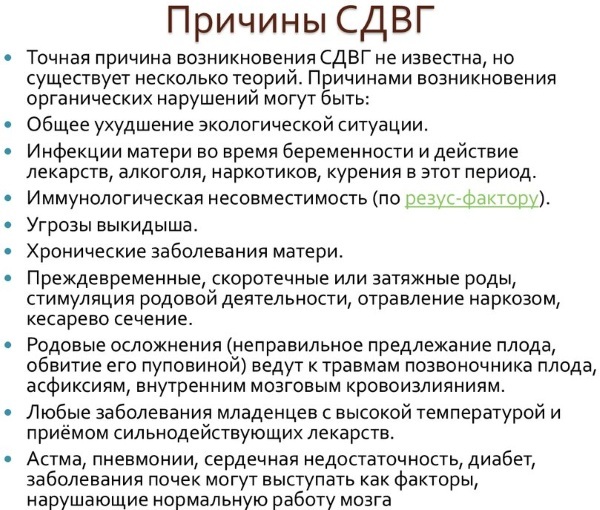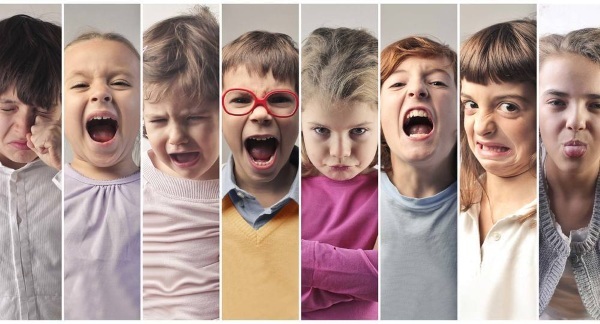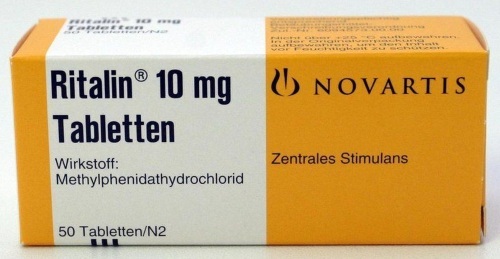ADHD in younger children and the older age group occurs in all countries with equal frequency. According to medical statistics, this disease is diagnosed in 10% of students of educational institutions under the age of 12 years.
Treatment of this disorder includes conducting regular sessions with a psychotherapist, building an effective scheme for social support and adaptation of the patient, and improving his quality of life. Drug therapy is used only in extreme cases, when the child's behavior becomes uncontrollable, as well as overly impulsive.
Record content:
- 1 What is ADHD?
-
2 Reasons for development
- 2.1 Heredity
- 2.2 Premature birth
- 2.3 Bad habits of the mother during pregnancy
- 2.4 Damage to the frontal lobe of the brain
- 2.5 Exposure to toxins in infancy
-
3 How to recognize ADHD?
- 3.1 Age
- 3.2 Symptoms that last at least 6 months
- 3.3 Symptoms that recur at home and in kindergarten or school
- 3.4 Symptoms That Reduce Quality of Life
- 4 Why is ADHD dangerous?
-
5 How is ADHD treated?
- 5.1 Psychotherapy
- 5.2 Family work
- 5.3 Drug therapy
- 5.4 Proper nutrition
- 5.5 Social support
- 5.6 Vitamin therapy
- 6 Video about ADHD
What is ADHD?
ADHD (attention deficit hyperactivity disorder) in children is a type of behavioral disorder that is associated with the presence of neurological disorders. This disease is accompanied by the manifestation of rich symptoms.
The main signs of the disease are problems with concentration, increased impulsivity in decision-making, actions, and excessive physical activity. It is believed that about 30% of children with ADHD outgrow or adjust to the disorder as they get older.
If the disease persists into adulthood, then patients in this group have not only high hyperactivity, but there are also signs of a decrease in the intellectual abilities of the brain with significant difficulties in objective perception information.
From a medical point of view, ADHD is considered a neurological syndrome, the treatment of which is individual. Of great importance are the reasons that provoked hyperactivity and impaired concentration of attention, the general condition of the child and the severity of clinical symptoms.
ADHD is a behavioral disorder that has been studied by the world's leading neurologists since 1970. A distinctive feature of this disease is that its first signs appear in early childhood, when the child acquires basic skills to express his emotional state. As he grows up, the symptoms of the disease become more intense and progress.
The most striking manifestation of the signs of ADHD is found in children attending primary school when they first encounter large amounts of information. The treatment of this disorder should be comprehensive, which includes the use of psychotherapy, social adaptation, and medications.
The table presents the 3 main types of ADHD, as well as describes their classification features.
| Types of ADHD | Characteristics of a behavioral disorder |
| ADHD with attention deficit predominance | This type of neurological syndrome is characterized by the fact that the child does not show pronounced hyperactivity. At the same time, he is not able to concentrate on the incoming information or the study of environmental subjects. Children with such a behavioral disorder are distinguished by isolation, low intellectual abilities, and lack of interest in gaining new knowledge. |
| ADHD with predominance of hyperactivity and impulsivity | Children with this type of neurological syndrome are characterized by increased hyperactivity, unstable psychoemotional state, and a sharp change in mood. A child with such a diagnosis always acts impulsively, does not think about what he is doing, and also what goals he pursues in a particular situation. Children with ADHD, which are dominated by hyperactivity and impulsivity, are extremely difficult to teach to perseverance and study of general education subjects. |
| Mixed ADHD | Children suffering from mixed ADHD are characterized by relatively passive behavior, withdrawal, poor perseverance, lack of interest in new information. A child with this diagnosis may have lower intellectual abilities, which continue to decline against the background of impaired cognitive functions of the brain. |
Recent scientific research in the field of neurology has shown that it is possible to develop ADHD of an unspecified type, when doctors are unable to identify a specific line of behavior in a child. In 2018, attention deficit hyperactivity disorder was identified as a separate disease (ICD-11).
Reasons for development
ADHD in children (the treatment of this syndrome lasts for years) occurs under the influence of various factors. The exact reasons for the development of this disorder have not yet been established. It is believed that impaired behavior and attention deficit can be caused by the child's genetic predisposition, as well as organic brain damage.
Heredity
According to ICD-11, attention deficit hyperactivity disorder is a neurodevelopmental disorder. This means that there is a high degree of probability that the disorder is transmitted from parents along with hereditary information.

Children with blood relatives suffering from similar neurological disorders are at a special risk group. If we consider the genetic nature of the origin of ADHD, then in boys this disease occurs 3 times more often than in girls. Until now, doctors cannot understand the specifics of the current pattern.
Premature birth
Premature onset of labor is stressful not only for a pregnant woman, but also for the body of a newborn baby. In the event that during the birth of the baby, potent medications were used (drugs anesthesia, anticoagulants), then their constituent components can affect the central nervous system newborn.
Also, the presence of anomalies in the development of individual centers of the brain is not excluded, which are responsible for:
- psycho-emotional reactions of the child;
- cognitive function;
- ability to concentrate.
Bad habits of the mother during pregnancy
ADHD in children (treatment of the disorder is carried out by experienced psychotherapists), whose mothers had harmful addictions, occurs several times more often. Pregnant women who regularly drink alcohol drugs, tobacco products, subject the child's central nervous system to additional stimulation chemicals.
As a result, such children are born with already formed alcohol, drug or nicotine addiction. The pleasure centers of the child's brain continue to demand further intake of these substances.
In this regard, children become nervous, impulsive, and are characterized by an unstable psychoemotional state. Narcotic drugs and alcohol, which were used by a woman during pregnancy, lead to organic lesions of the cerebral cortex of the child even at the stage of his intrauterine development.
Most children born to mothers with addiction to addictions have lower intellectual abilities, have problems concentrating, are unable to assimilate information.
A child who has developed ADHD under the influence of this cause needs individual training, as well as social adaptation from the specialists of the relevant services.
Damage to the frontal lobe of the brain
Centers responsible for the regulation and control of mental activity are concentrated in the frontal lobe of the brain. This reason for the development of ADHD is typical for children who have experienced a birth or severe traumatic brain injury, removal of an extraneous neoplasm.
Under the influence of this factor, the child not only develops symptoms of hyperactivity, but also significantly decreases mental abilities. Children with damage to the frontal lobe of the brain are characterized by a complete lack of interest in learning new information and environmental objects.
The patient's impulsive actions have no justified motives. Most of the child's hyperactive actions are devoid of any meaning. This cause of ADHD is the most severe, and the acquired changes in the structure of the brain are irreversible.
Exposure to toxins in infancy
ADHD in children (treatment of the syndrome depends on the causes that provoked it) is a behavioral disorder that can occur under the influence of toxic substances. For example, if a newborn child has suffered chemical poisoning, has had a bacterial or viral disease, the causative agents of which are capable of synthesizing neurotoxins.
The infant may be exposed to these factors in the first days after birth, as well as throughout the entire period of early childhood. In this case, the reason for the development of ADHD is associated with organic brain damage, which occurs under the influence of toxic substances.
How to recognize ADHD?
ADHD in children (treatment of this disorder is impossible without the participation of a child psychotherapist) can manifest itself with intense or mild symptoms with periodic manifestations.
This diagnosis is made according to the results of a phenomenological characteristic, which is compiled by a qualified psychologist. At the same time, a comparative analysis of the child's behavior in various conditions of the situation is carried out. For example, in kindergarten, school and at home with loved ones.
The prerequisite for a diagnosis of ADHD is the presence of:
- impulsivity;
- persistent disorders associated with learning and perception of information;
- problems with the implementation of social functions (communication skills, friendship, normal relationships with peers).
Age
The final diagnosis in the form of attention deficit hyperactivity disorder can be made in children who have reached 12 years of age. At the same time, symptoms of ADHD should be present throughout the entire period of a child's life, including kindergarten, elementary, middle and high school.
Until 1994, diagnostic criteria were in force, which made it possible to make this diagnosis for children who turned 6 years old. In order for the therapist to draw up a medical report indicating the presence of ADHD in a 12-year-old child, at least 6 symptoms of this disorder must be present.
If the object of examination is children under 17 years of age, then the diagnostic criteria for the child should be at least 5 symptoms of neurological syndrome.
The main signs of ADHD associated with decreased concentration and hyperactivity should persist for 6 months. or a longer period of time. Children with this disease lag significantly behind in mental development, do not know how to establish stable social ties with their peers.
To be diagnosed with ADHD at all stages of adulthood, a child must not show signs of other mental and neurological disorders. For this purpose, differential diagnostics can be carried out.
The younger the child, the more difficult it is to identify a behavioral disorder associated with attention deficit hyperactivity disorder. Especially if there are other mental disorders with similar symptoms.
Symptoms that last at least 6 months
Most of the signs of ADHD persist for more than 6 months and do not leave the child for a longer period of time.
There are the following main signs of this syndrome, which can be present for more than six months:
- lack of ability to keep attention on the same details, objects of the environment;
- frivolity;
- impulsivity in actions;
- sudden mood swings;
- inability to maintain concentration of thought while reading or listening to a lecture;
- lack of a sense of time;
- the inability to store personal belongings and objects in compliance with the rules of order;
- forgetfulness;
- absent-mindedness;
- decreased cognitive function;
- unreasonable running along a certain trajectory;
- restless movements of the legs and hands.
Despite the presence of signs of hyperactivity, the sick child may also have symptoms. passivity and apathy towards others, if it is necessary to show concentration of attention, activate mental process.
Symptoms that recur at home and in kindergarten or school
The following symptoms of ADHD are distinguished, which are repeated in children in kindergarten, school and at home:
- practically does not react to the comments of parents and educator;
- has difficulty retaining attention during the educational process, doing homework;
- makes gross mistakes;
- does not complete school assignments;
- differs in restlessness;
- the child spontaneously takes off and runs in a circle, imitating the sound of a motor (does not react to the comments of parents, teacher, educator);
- constantly loses personal belongings, without attaching significant importance to it;
- easily distracted by extraneous signals;
- has a very poor memory;
- gets up during class or kindergarten;
- unable to play quietly or perform other activities.

The presence of the above symptoms should alert the parents of the child and the teaching staff who are involved in his upbringing. Children with similar signs of a behavioral disorder require a more detailed diagnosis by a psychotherapist.
Symptoms That Reduce Quality of Life
As a child with ADHD grows older, their quality of life decreases. which is associated with the following symptoms of a behavioral disorder:
- lack of ability to establish social ties;
- increased talkativeness;
- constant loss of house keys, documents and other personal belongings;
- inability to use personal time rationally;
- shamelessness and a tendency to interfere in the conversations of strangers;
- restless behavior, accompanied by running, hand gestures, which are manifested in public places;
- using other people's things without the permission of their owners;
- failure to fulfill elementary duties and orders.
A child who could not outgrow ADHD, entered adulthood with a behavioral disorder, faces a lot of problems. An adult with ADHD is deprived of the skills to build relationships with the opposite sex, cannot get a job, pay bank bills, and also lead an ordinary life of a self-sufficient person.
Why is ADHD dangerous?
The main danger of ADHD is that a child or adult suffering from this disease is deprived of the opportunity for full development. Due to the presence of a behavioral disorder, the assimilation of general educational information does not occur, children grow up unadapted to an independent life.
Due to the presence of a behavioral disorder, the assimilation of general educational information does not occur, children grow up unadapted to an independent life.
How is ADHD treated?
ADHD therapy is individual in nature, depending on the symptoms that are present in a particular patient. Each patient needs to take an integrated approach using different treatment methods.
Psychotherapy
Children with ADHD symptoms should be treated by a psychotherapist. A doctor of this profile assesses the severity of a behavioral disorder, finds out the reasons that contribute to the appearance of signs of a behavioral disorder.
Perhaps this is the negative influence of the people around or unsatisfactory conditions in kindergarten, school, at home. The required number of psychotherapy sessions is determined by the doctor.
Family work
Parents of a child with ADHD must constantly monitor their behavior. The patient should be kept under supervision at all times, to prevent the occurrence of potentially dangerous situations.
Children with this behavioral disorder can perform actions without realizing their actions. For example, set fire to, turn over hot water, climb out onto a windowsill with an open window. Therefore, parents should show maximum concentration of attention.
Drug therapy
In order to stimulate concentration of attention in children with ADHD, the drug Ritalin is used. This medication is prescribed only in extreme cases, when, due to constant distraction, the child does not master the general education program, the risk of developing mental retardation increases.
The dosage regimen of Ritalin is determined by the attending physician, since this medication has a large number of side effects.
Proper nutrition
In the diet of a child with ADHD, only biologically useful foods should be present, improving the function of the cerebral cortex, namely:
- walnuts;
- honey collected from herbs;
- boiled rabbit, turkey, veal;
- fresh vegetables and fruits;
- greens;
- legumes;
- cottage cheese;
- hard cheese;
- fish and other seafood.
Confectionery, semi-finished products, sausages are categorically prohibited. Violation of the diet, the use of low-quality food, can lead to retardation in the physical development of the child.
Social support
Children with ADHD should be brought up and educated only in an atmosphere of tolerance and mutual assistance. People surrounding a child with a similar diagnosis not only control his actions, but also explain how to act correctly in a given situation.
Vitamin therapy
To maintain the functional activity of the centers of the brain, improve cognitive functions and increase attention, children with a diagnosis of ADHD are prescribed B vitamins.
In this case, multivitamin complexes can be used:
- Solaray;
- Natrol;
- Now Foods B-50;
- Thompson;
- Triovit.
The dosage regimen of multivitamin complexes depends on the age of the child. The appointment of therapy with these drugs should be carried out by a pediatrician.
ADHD is an attention deficit hyperactivity disorder that affects children of all age groups. This disease is characterized by severe behavioral disturbances, accompanied by the inability to concentrate on environmental objects, and is manifested by impulsive actions.
Treatment of a neurological syndrome involves the use of psychotherapy methods, taking multivitamin complexes, and organizing proper nutrition. The main danger of ADHD is that the child loses the ability to fully assimilate general educational information, is unable to establish social ties with peers.
Video about ADHD
Attention Deficit Hyperactivity Disorder:



